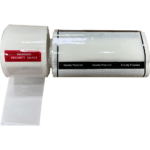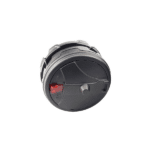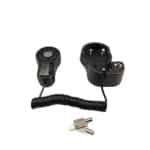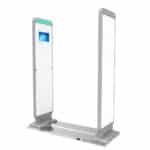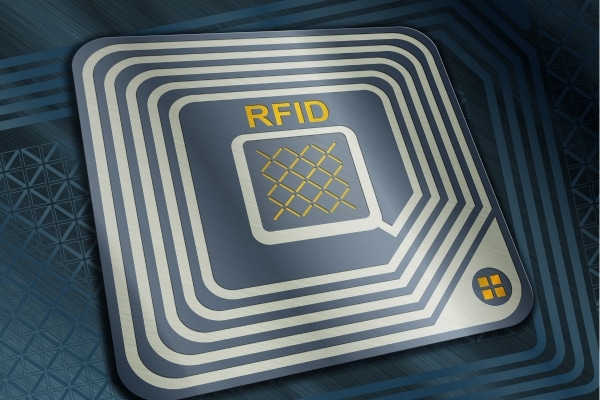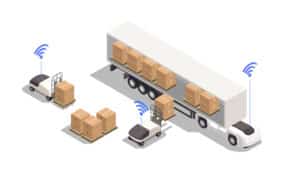Protection of valuable assets is of utmost importance, businesses and organizations are constantly searching for innovative and reliable security solutions. One such solution that has gained significant traction is the RFID security tag. With its advanced technology and capabilities, the RFID security tag offers an efficient and effective means of safeguarding assets. In this article, we will delve into the power of RFID security tags and how they can protect valuable assets in various industries.
What is an RFID security tag?

An RFID security tag is a small electronic device that uses radio frequency identification (RFID) technology to track and monitor assets. It consists of a microchip and an antenna that work together to transmit and receive information wirelessly. The tag is attached to the asset, while the reader, connected to a centralized system, detects and records the tag’s information. This technology enables real-time tracking, inventory management, and asset protection across multiple industries.
The features and benefits of RFID security tags

RFID security tags offer several features and benefits that make them an ideal choice for asset protection:
- Asset tracking: RFID security tags provide real-time visibility and tracking of assets, allowing businesses to monitor their location and movement accurately. This feature is particularly useful for industries such as logistics, retail, and manufacturing, where assets need to be tracked at various stages of the supply chain.
- Tamper detection: RFID security tags can be programmed to send alerts when tampered with or removed without proper authorization. This feature ensures that any unauthorized access or tampering is immediately detected, enabling timely intervention and prevention of loss or damage.
- Secure authentication: RFID security tags utilize encryption and authentication protocols to ensure the integrity and authenticity of the data transmitted. This makes it difficult for unauthorized users to gain access to sensitive information or manipulate the system.
- Inventory management: RFID security tags enable efficient and accurate inventory management by automating the process of asset identification and counting. This reduces manual errors and saves time, thereby improving overall operational efficiency.
- Cost-effective solution: RFID security tags eliminate the need for manual tracking and monitoring of assets, which can be time-consuming and prone to errors. By automating these processes, businesses can achieve cost savings and allocate resources more effectively.
Industries benefiting from RFID security tags
Let’s explore some of the industries that have adopted RFID security tags for asset protection:
Retail
In the retail industry, RFID security tags are widely used to prevent theft and manage inventory. By tagging high-value items, businesses can track their movement within the store and detect any unauthorized attempts to remove them. This enhances customer satisfaction by ensuring product availability while reducing the possibility of loss.
Healthcare
In healthcare, RFID security tags are used to protect valuable equipment, pharmaceuticals, and patient records. By tagging these assets, hospitals and medical facilities can track their location, prevent theft, and ensure accurate inventory management. This improves patient safety and operational efficiency within the healthcare setting.
Logistics
RFID security tags are crucial in the transportation and logistics industry to track shipments, containers, and vehicles. By attaching RFID tags to cargo or containers, businesses can monitor their movement from point of origin to destination. This helps prevent theft, loss, or misplacement of assets, ensuring a secure and efficient supply chain. Additionally, RFID technology can be used for automatic identification and data capture, reducing manual labor and increasing operational efficiency.
Hospitality and tourism
In the hospitality and tourism industry, RFID security tags are used to protect hotel assets, such as room keys, electronic devices, and high-value amenities. By tagging these items, hotels can prevent theft, monitor their usage, and enhance guest experience. For example, RFID-enabled room keys allow for contactless entry, improving security and convenience for guests.
Choosing the Right RFID Security Tag
Tag type
There are different types of RFID security tags, including passive, active, and semi-passive tags. Passive tags are cost-effective and have a longer battery life, making them suitable for most applications. Active tags have a longer read range and are ideal for tracking assets over larger areas. Semi-passive tags combine the benefits of passive and active tags, providing a balance between cost and performance.
Read range
The read range of RFID security tags determines the distance at which the tag can be detected and read by RFID readers. Consider the specific requirements of your application and choose tags with an appropriate read range. Longer read ranges may be necessary for tracking assets in large warehouses or outdoor environments.
Durability
Depending on the industry and environment, RFID security tags may be exposed to harsh conditions, such as extreme temperatures, moisture, or physical impact. Choose tags that are durable and can withstand these conditions to ensure reliable performance and longevity.
Compatibility
Ensure that the RFID security tags you choose are compatible with your existing infrastructure, including RFID readers and software systems. This will ensure seamless integration and effective asset tracking.
Conclusion
In conclusion, RFID security tags play a crucial role in various industries, including manufacturing, transportation and logistics, hospitality and tourism, and financial institutions. These tags provide a reliable and efficient method of asset protection, tracking, and monitoring. By implementing RFID technology, businesses can improve their operations, enhance security, and streamline their supply chains.
FAQs
1. What is an RFID security system?
An RFID (Radio-Frequency Identification) security system is a technology that uses RFID tags and readers to control access, monitor assets, and enhance security. It typically consists of the following components:
- RFID security tags: These are attached to assets, identification cards, or access badges. Each tag contains a unique identifier and, in some cases, additional data.
- RFID readers: These devices emit radio waves to communicate with RFID tags. They can be fixed or handheld and are strategically placed at entry points, gates, or checkpoints.
- Access control software: This software manages the RFID system, including user access privileges, data storage, and event logging.
RFID security systems are used in various applications, including access control for buildings, parking lots, and secure areas. They are also employed for asset tracking, inventory management, and anti-theft measures in retail and logistics. RFID enhances security by providing accurate identification, reducing the risk of unauthorized access, and facilitating real-time monitoring and reporting.
2. How do RFID tags reduce theft?
RFID tags reduce theft by providing real-time inventory visibility, triggering alarms at exit points, tracking item movement, reducing shelf-emptying, aiding in product recovery, and ultimately lowering shrinkage in retail environments.
3. How are RFID tags tracked?
RFID tags are tracked by activating them with RFID readers, receiving and processing data from the tags, matching it with a database, and analyzing the information for monitoring and reporting purposes. The effectiveness of tracking depends on the RFID system’s range and capabilities.
4. How are RFID tags activated?
RFID tags are activated by RFID readers emitting radio waves, which provide the energy needed to power the tag’s circuitry. This activation enables the tag to transmit its unique identification or stored data to the reader for further processing and monitoring.


